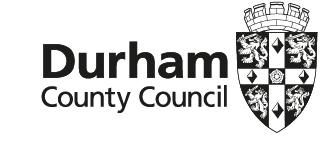The Gallery hosts three permanent pieces of work, The Steps by Tom McGuinness, The Miners Gala Mural by Norman Cornish and Flower Show in Auckland Park by John Wilson Carmichael, as well as showing a range of other works by the two artists on a curated rotation through each year.
Tom McGuinness (1926-2006)
Born in Witton Park, three miles from Bishop Auckland, Tom McGuinness was conscripted into the coal industry as part of the War effort in 1944. He remained in mining for 39 years until he was made redundant in 1983, having worked in many of County Durham’s collieries and experienced various conditions and practices. McGuinness’s talent was first spotted by his manager when drawing in chalk on a coal tub and he was encouraged to attend night classes at the Darlington School of Art. A major influence on his work was Gill Harman, art tutor at Durham University Extra-Mural Department which he attended in the 1960s. She taught McGuinness the importance of learning art history alongside practical skills. Tom was also a member of the acclaimed Spennymoor Settlement Art & Sketching Group.
McGuinness’s work contained strong political, sociological and religious commentary. Central to his art was the depiction of the realities of life underground; the dark, claustrophobic and filthy conditions in which miners were often unable to stand upright. Though talented at figure drawing, McGuinness developed an expressionist style of his own often characterised by hunched, distorted figures. He used strong colours and warped imagery to convey the depth of emotion felt during his own experiences as a miner; points of luminous colour were employed to underline the pure dark of a mine shaft. He encompassed various media including sketches, oils, printmaking and stained glass, an example of which can be seen in the Town Hall’s library.
Norman Cornish MBE (1919-2014)
The Mural of the Durham Miners’ Gala, oil on canvas, 1963
The artwork of Norman Cornish captured the spirit of North East mining communities during the mid-twentieth century. Essentially self-taught, he worked as a miner in the Durham coalfield for 33 years before becoming a full-time, professional artist. In 1962, Cornish was commissioned by Durham County Council to paint a large mural to hang in the new County Hall in Durham City. His chosen subject was the Durham Miners’ Gala, an annual celebration at the heart of mining culture in the North East which continues to this day.
Cornish’s natural talent was nurtured when, aged 15, he joined the Sketching Club at The Settlement, in his home-town of Spennymoor. There, he was encouraged to paint the world around him – his ‘slice of life’. This fascination with details of everyday life is evident in the mural; men and women dressed in their Sunday best, old friends shaking hands and marching bands playing instruments. The whole design is full of movement. Lodge banners float on a sea of humanity while waves of young and old cascade along in the foreground. Some figures are based on Cornish’s friends and colleagues; he also included a self-portrait on the far left-hand side with his young son, John, perched on his shoulders.
John Wilson Carmichael (1799-1868)
Flower Show in Auckland Park, oil on canvas, 1859
John Wilson Carmichael (1799-1868) was born in Newcastle and became famous for his landscapes and seascapes.
This painting shows the Bishop Auckland flower show in 1859, with crowds stretching down to the river Gaunless.
It is believed that Bishop Edward Maltby began the festival in 1852 inspired by the local mining villages. The show grew and grew with crowds of almost 30,000 each year. After several wet summers, the festival came to an end in 1887.
Carmichael faithfully painted the key landmarks in Bishop Auckland, such as Auckland Castle, but viewers may notice discrepancies in the placement of some landmarks in the painting.
Born in Ouseburn, Newcastle, John Carmichael was the son of a ship carpenter. As a teenager, he spent three years aboard ships sailing the Portuguese and Spanish coasts. When he returned to Newcastle, he was apprenticed to Farrington and Brothers, a shipbuilding and carpentry firm. They recognised his artistic skills and bought him his first set of paints. By 1825, he had set up his first studio as a landscape painter.
Wealthy patrons appreciated his skill as an illustrator and painter of landscapes and marine scenes. From 1835, he began exhibiting in London at the Royal Academy of Arts and Society of British Arts. He continued to illustrate and in 1855 was commissioned by the Illustrated London News to cover the Crimean War.
John Carmichael is considered one of three most accomplished Victorian maritime painters, for his luminous skies and landscapes. His house, 4 Ravensworth Terrace, has been reconstructed at Beamish.

